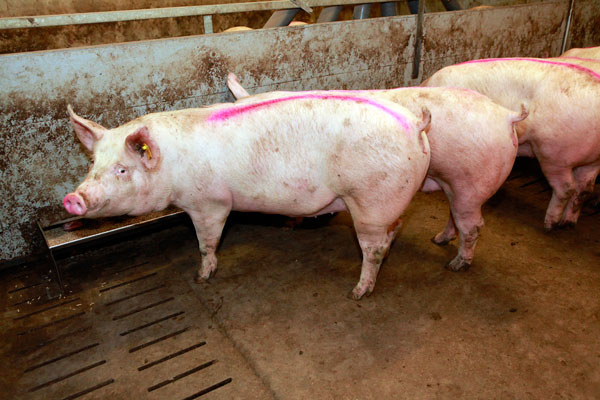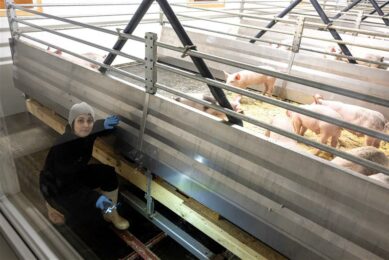Leg conformation and sow reproduction related

Genetic selection for sound leg conformation and locomotion of young pigs also appears to positively influence reproductive performance in sows.
This has been the outcome of research by scientists from the Swedish University of Agricultural Sciences in Uppsala, Sweden and Aarhus University, Denmark.
Lameness has both welfare and economical aspects
In their study in Livestock Science, they explain that lameness is an issue of concern in pig production due both to animal welfare and to economical aspects. Lame sows are believed to suffer from pain and stress which is reported to have a negative influence on reproduction. Leg conformation and locomotion traits in young animals are associated with the risk of lameness at higher age.
The researchers stated that the purpose of this study was to estimate the genetic parameters of leg conformation traits recorded at performance testing (around 5 months of age) and their genetic correlations with reproduction traits.
Genetic analysis on leg conformation and reproduction traits
Information on leg conformation traits from 123,307 pigs scored and on reproduction traits from 22,204 litters in the first and second parity from Swedish Yorkshire nucleus herds were available for genetic analysis.
In total 8 conformation and locomotion traits, coming from the old or the new scoring system in Sweden, included old movement, old overall leg score, new movement, new toes quality, new front leg quality, new rear leg quality, standing-under-position syndrome and new overall score.
Analysing 4 traits
By parity, 4 reproduction traits were analysed:
• the number of total born piglets;
• the number of liveborn piglets;
• the number of stillborn piglets; and
• weaning-to-service interval.
In the article, the researchers explain that estimates of heritabilities and genetic correlations between traits were obtained using a multi-trait linear animal mixed model. The heritability estimates were low to moderate, ranging from 0.02 to 0.20 for conformation traits and from 0.06 to 0.10 for reproduction traits.
Genetic correlations discovered
The researchers reported, “Significant genetic correlations were found between new toe quality and new overall score and the number of liveborn piglets in the first parity (-0.35 and -0.31, respectively), indicating that sows with even toes and better overall leg score tend to have higher number of liveborn piglets. Old movement score showed significant correlations with number of total born and number of liveborn piglets in both parities (0.20 to 0.36) and with weaning to service interval in the 2nd parity (roughly -0.35).”
In addition, they wrote: “Similarly, standing-under-position syndrome was highly associated with number of total born and number of liveborn piglets in both parities (-0.54 to -0.35), indicating that sows with better movement and not suffering from standing-under-position syndrome are likely to have larger litter size and shorter interval to return heat after weaning.”
The conclusion therefore was clear: heritabilities and significantly favourable genetic correlation estimates suggest the possibility of simultaneous improvement of both leg quality and reproduction performance by selecting on sound leg conformation and locomotion of young pigs.
The research was written by Hong Thu Le, Katja Nilsson, Elise Norberg and Nils Lundeheim.











